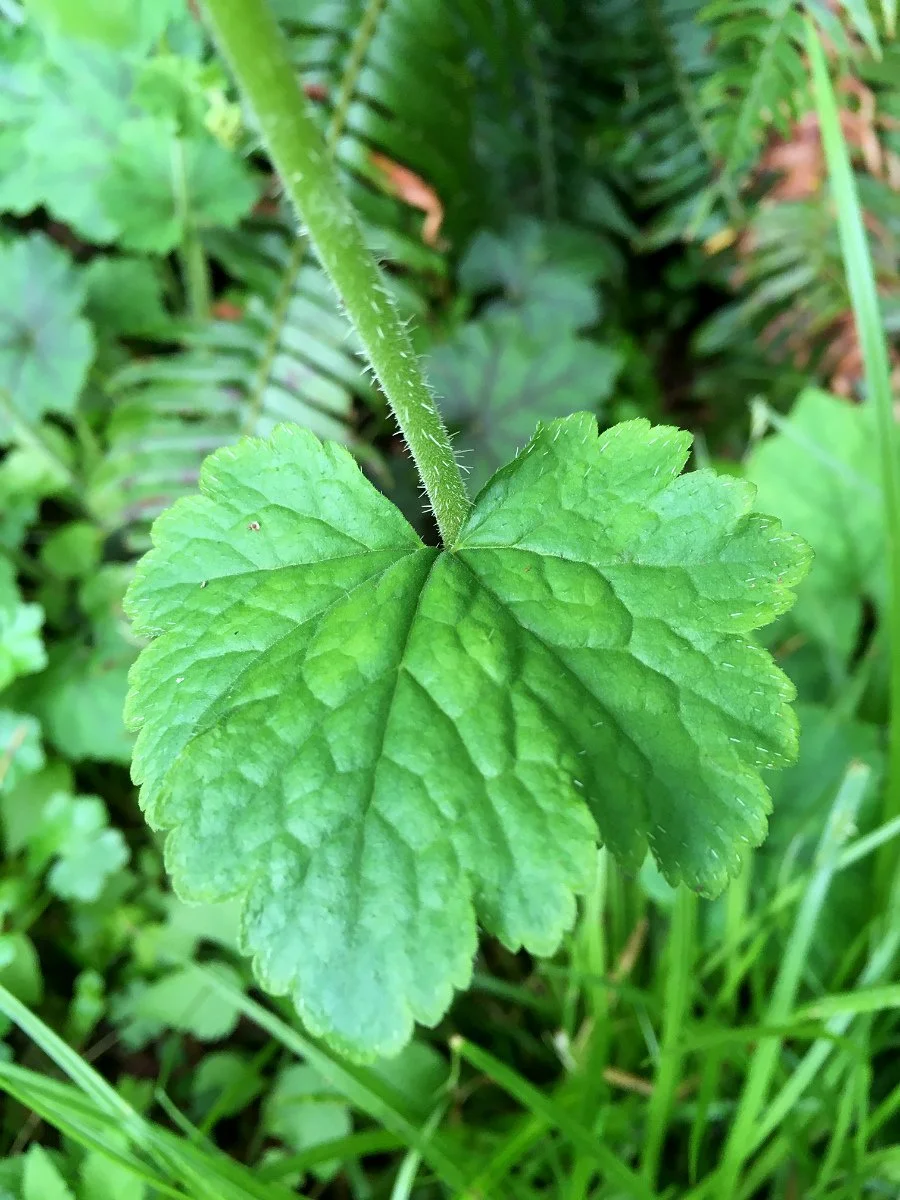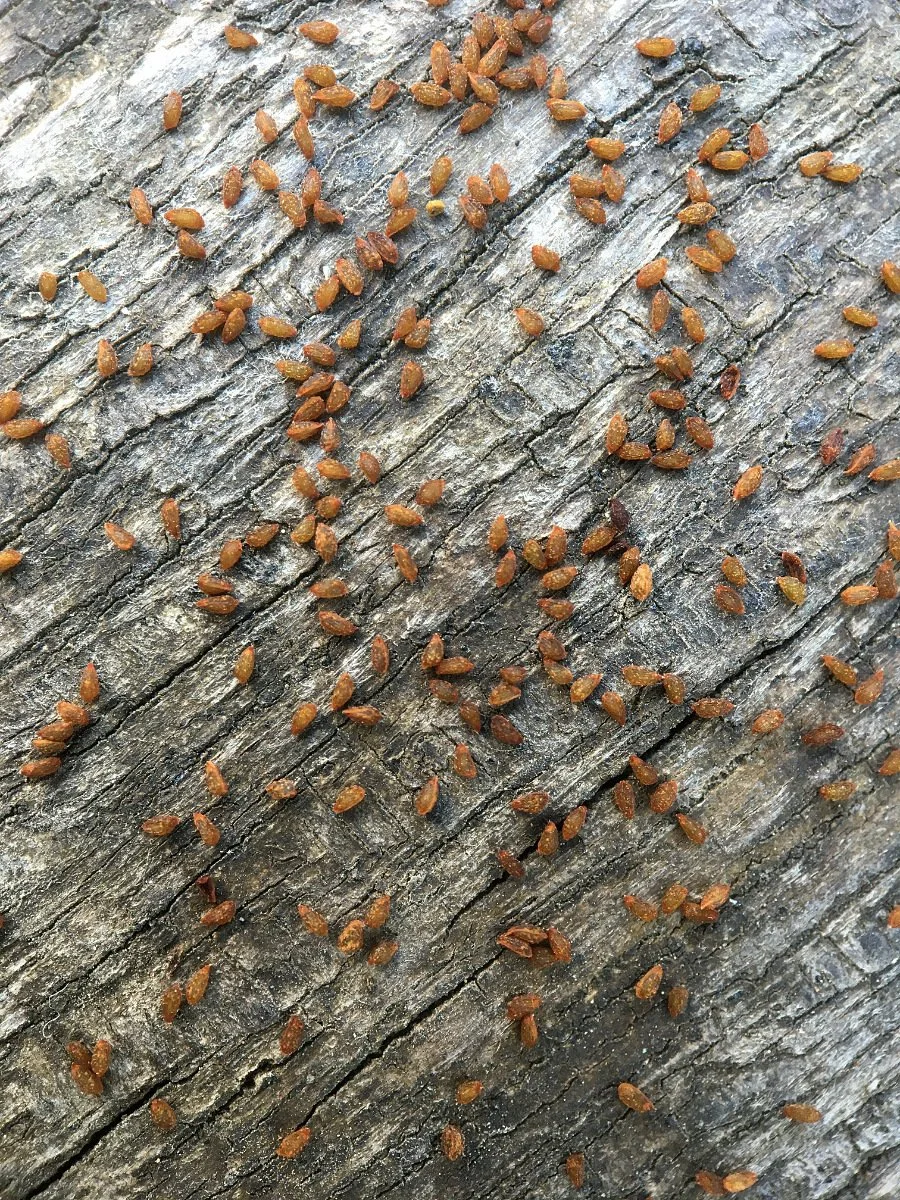Fringecup (Tellima grandiflora) Saxifrage Family (Saxifragaceae)
Its habitat is moist forests, glades, stream banks, avalanche tracks, thickets, and clearings. This plant grows throughout the arboretum. Look for it in the wildflower garden on the river trail, out in the wetlands, and on the hillside forest along the zigzag trail.
Leaves
Basal leaves with long, very hairy stalks. Pojar and MacKinnon list them as +/- heart-shaped in outline, while Mathews describes them as +/- kidney-shaped. They are shallowly 5 -7 lobed and coarsely toothed, sparsely hairy; stem leaves 1 - 3, smaller. I took the third photo during the winter and felt the leaf’s elegant sea-green color with watercolored, purple veins was soothing and refreshing.
Flower
Petals white, aging deep pink, slender, with many threadlike branches, reflexed around the jar-shaped greenish-white calyx.
Pollinators
Even though the flowers are not very showy on this plant, they are numerous, and I often see bumblebees visiting them. These photos also show the flower petals turning pink.
Seeds
The seed capsules are around 10 mm or a tad bigger than a quarter of an inch. They have numerous, brown, wrinkle-warted seeds that are tiny.
Quick Reference:
Height: 16 - 40" inches.
Leaves: Basal leaves with long, very hairy stalks, +/- heart-shaped, shallowly 5 -7 lobed and coarsely toothed.
Flowers: Petals white, aging deep pink, slender, with many threadlike branches, reflexed around the jar-shaped greenish white calyx.
Habitat: Moist forests, glades, stream banks, avalanche tracks, thickets, and clearings.
Journal Location:
Mt. Pisgah Arboretum, Eugene, OR
Mt. Pisgah Arboretum Website
Mt. Pisgah Arboretum Plant List
References
Mathews, Daniel. Cascade-Olympic Natural History. Raven Editions in conjunction with Portland Audubon Society, 1988.
Pojar, Jim, and Andy MacKinnon. Plants of the Pacific Northwest Coast: Washington, Oregon, British Columbia and Alaska (Revised). B.C. Ministry of Forests and Lone Pine Publishing, 1994.
















